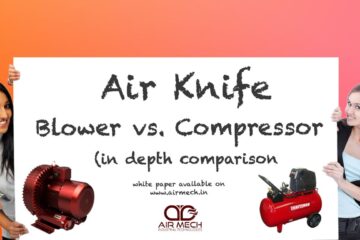By considering these factors, one can make informed decisions when selecting a dust collector that best fits their needs and budget.
Size, Capacity, and Stages of Dust Collection:
The size and capacity of the dust collector, along with its stages of dust collection, determine its ability to handle different volumes and types of particulate matter. Dust collectors with multiple stages(single stage / double stage / separation system), such as pre-filters and main filters, are more effective at capturing various particle sizes and can be priced higher due to their increased complexity and efficiency.
- Price Impact: Larger size and higher capacity lead to higher prices. More stages (pre-filters, main filters) increase complexity and efficiency, thus raising the cost.
- Reasoning: Bigger units handle larger dust volumes, requiring more powerful components. Multi-stage filtration tackles various particle sizes, demanding more sophisticated technology.
Dust Load and Dust Characteristics:
The amount of dust and its specific properties are crucial. Higher dust loads demand more powerful equipment to handle the volume efficiently. Likewise, the dust itself can influence the type of filtration system needed.
- Price Impact: Higher dust loads necessitate stronger equipment, driving the price up. Specific dust properties influence the filtration system needed, impacting cost. (e.g., fine dust requires high-efficiency filters, which are more expensive)
- Reasoning: Dust collectors need to be powerful enough to handle the dust volume efficiently. The type of dust (fine, abrasive, etc.) determines the filtration system, with specialized filters costing more.
Filter Types:
Filters form the backbone of any dust collector, determining its efficiency and longevity. While basic models may utilize standard filter media like fabric bags or pleated cartridges, advanced units often employ specialized materials such as HEPA or electrostatic filters. These high-performance filters come at a premium due to their superior dust-capturing capabilities and longer service life, making them a worthwhile investment for industries with stringent air quality requirements. For example, fine, abrasive dust may require a high-efficiency cartridge collector, while larger wood shavings might be handled by a more basic cyclone dust collector. These differences in filtration needs translate to price variations.
- Price Impact: Advanced filters like HEPA or electrostatic filters are more expensive than standard options like fabric bags.
- Reasoning: High-performance filters offer superior dust capture and longer lifespan, justifying the premium price. Standard filters are less efficient and may require more frequent replacements.
Air-to-Cloth Ratio:
This ratio plays a significant role in dust capture efficiency and filter life. A lower ratio allows for more air filtration through the fabric, improving efficiency. However, it also necessitates more filter media, impacting the initial cost. Conversely, a higher ratio reduces filter life due to increased dust loading and requires more frequent replacements, leading to higher ongoing costs.
- Price Impact: A lower ratio allows for better dust capture but requires more filter media, increasing initial cost. A higher ratio is cheaper upfront but leads to shorter filter life and more frequent replacements, raising long-term costs.
- Reasoning: A lower ratio maximizes dust capture efficiency but necessitates a larger filter area, thus more material. A higher ratio saves on initial filter material but reduces filter life due to increased dust loading, requiring frequent replacements.
Filtration Efficiency:
Dust collectors come with different types of filtration systems such as bag filters, cartridge filters, or electrostatic precipitators. Units with higher filtration efficiency typically cost more due to advanced technology and materials.
- Price Impact: Dust collectors with higher filtration efficiency (e.g., HEPA filters) typically cost more due to advanced technology and materials.
- Reasoning: More efficient filtration systems utilize sophisticated components and materials, justifying the price increase.
Collection Type:
Dust collectors come in various configurations, including portable units, centralized systems, and ambient air cleaners. The choice of collection type depends on factors like space constraints, mobility requirements, and the volume of dust generated. Portable units, ideal for small workshops or temporary work areas, are typically more affordable than centralized systems, which offer centralized control and greater capacity but come at a higher initial cost.
- Price Impact: Portable units are generally cheaper than centralized systems. Centralized systems offer greater capacity and control but come at a higher initial cost.
- Reasoning: Portable units are simpler and ideal for smaller applications. Centralized systems cater to larger facilities and require more complex infrastructure, hence the higher price.
Construction Material:
Dust collectors can be constructed from different materials such as steel, stainless steel, or aluminum. Units made from more durable and corrosion-resistant materials tend to be more expensive.
- Price Impact: Dust collectors made from durable and corrosion-resistant materials like stainless steel are more expensive than those made from steel or aluminum.
- Reasoning: More robust materials provide better longevity and withstand harsh environments, justifying the higher cost.
Features and Accessories:
Additional features such as automatic cleaning systems, variable speed drives, explosion-proof designs, and remote monitoring capabilities can add to the cost of a dust collector.
- Price Impact: Extra features like automatic cleaning systems, variable speed drives, explosion-proof designs, and remote monitoring add to the cost.
- Reasoning: These features offer convenience, improved efficiency, safety, or remote management, all of which come at an additional premium.
Design Constraints:
Factors like space availability, layout, and environmental conditions influence the design and installation of dust collection systems, impacting overall pricing. Customized solutions tailored to specific design constraints may involve additional engineering and fabrication costs, but they ensure optimal performance and efficiency in challenging environments.
- Price Impact: Customized solutions tailored to specific space limitations, layout complexities, or environmental conditions may involve additional engineering and fabrication costs.
- Reasoning: Custom designs require extra effort to ensure optimal performance in challenging environments, leading to higher costs.
Distance from Source of Dust:
The distance between the dust generation point and the dust collector unit affects the overall system design and cost. Longer duct runs or multiple collection points may require larger blowers, additional accessories, or specialized ducting materials, all of which contribute to higher installation costs.
- Price Impact: Longer distances between dust generation and the collector necessitate larger blowers, additional accessories, or specialized ducting materials, all increasing installation costs.
- Reasoning: Longer duct runs require more powerful systems and potentially specialized materials to handle efficient dust transfer, driving up installation costs.
Installation and Maintenance:
Consideration of installation costs, including ductwork and electrical requirements, as well as ongoing maintenance expenses, should be factored into the overall price.
- Price Impact: Factor in ductwork, electrical needs for installation, and ongoing maintenance expenses when considering the overall price.
- Reasoning: Installation involves labor and materials, while maintenance ensures optimal performance and filter lifespan. These factors contribute to the total cost of ownership.
Customization:
If the dust collector requires customization to meet specific requirements or environmental conditions, the price may increase accordingly.
- Price Impact: If the dust collector requires customization to meet specific requirements or environmental conditions, the price may increase accordingly.
- Reasoning: Customization necessitates additional design, engineering, and potentially unique components, justifying the higher price tag.
By understanding these factors and their impact on price, one can make informed decisions when choosing a dust collector that meets their specific needs and budget.
Air Mech Industrial Technologies offers dust collectors for every range and budget; feel free to connect with us discuss you requirement.





